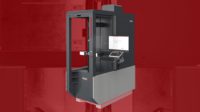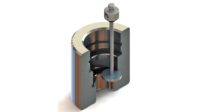Tell me if this sounds familiar: You’re at the airport waiting for your flight to board. You have your carry-on bag all packed with what you need. You watch as your fellow passengers line up and begin to board the flight. You notice quite of few have two, maybe even three, carry-on items. As the flight continues to board you get an all-too-familiar feeling of dread. The attendant comes on the loud speaker and says…wait for it…“This flight has run out of overhead storage space and all remaining passengers will need to check their carry-on bags to their final destination.” Yes, sometimes the world is a cruel place.
In the airline’s defense, sometimes, especially with smaller flights, they will alert passengers to limited overhead space and, well before boarding, offer passengers to check their bags voluntarily and/or encourage them to take the time to “consolidate their belongings into fewer carry-on items.”
Consolidation is something we’ve all done. It’s efficient and can help save time and space and naturally leads to greater organization and productivity. Perhaps you are one of those people that attempts to smush together the little, leftover slivers of soap you wind up with to try and create a “new,” full bar. That’s probably an extreme example, but consolidation does make a lot of sense, particularly when we are talking about items with a strong relationship.
“This flight has run out of overhead storage space and all remaining passengers will need to check their carry-on bags to their final destination.”
Perhaps you have two open boxes of cornflakes in the cupboard. You might be inclined to combine the contents into one container to save space in the pantry, as well as make it easier to know when it’s time to grab some more at the grocery store. Businesses use the same type of methodologies when they approach inventory control.
Additionally, a business that has just undergone a merger or an acquisition will use consolidation to improve its organizational structure, eliminate redundancies, and bring like-minded employees or related work under one umbrella, which can bring convenience and productivity.
On the consumer side, the idea of consolidation has led to the one-stop-shop. Making related items available in one place increases convenience for consumers. Hardware, home goods, appliances, and electronics stores—among many others—were born of this idea. And the idea has grown over the years into big box and superstores, literal warehouses of anything and everything you might ever need. You could even do your food shopping there.
But no single superstore has become more dominant than the internet. The proliferation of eCommerce has made it possible to hop online and conveniently purchase whatever we may want or need, in a matter of minutes, regardless of how related or unrelated the products might be to one another.
And speaking of the internet, the web has been aflutter the last few years with talk of the all-in-one computer. Along the lines of the concept of a one-stop-shop, an all-in-one product merges two or more related products together for convenience or improved functionality. Take for instance the Swiss army knife and the all-in-one printer. Perhaps, like me, you are familiar with the multi-ink pen, which allows you to deploy three or more different color inks from the same pen. Much like these products, the all-in-one computer houses the computer tower and monitor in one case, increasing functionality and decreasing the amount of space needed for the computer.
Even the quality industry has been asking itself whether increased functionality, convenience, and productivity is possible with consolidation. We offer two articles that may help you along. So, read “Is it Possible to Measure Shaft, Form and Gear with an All-In-One Machine?” and “Sledgehammer vs. Nutcracker: Which is the Right Tool for the Job?” and everything else we have to offer in this month’s Quality.
Enjoy and thanks for reading!





